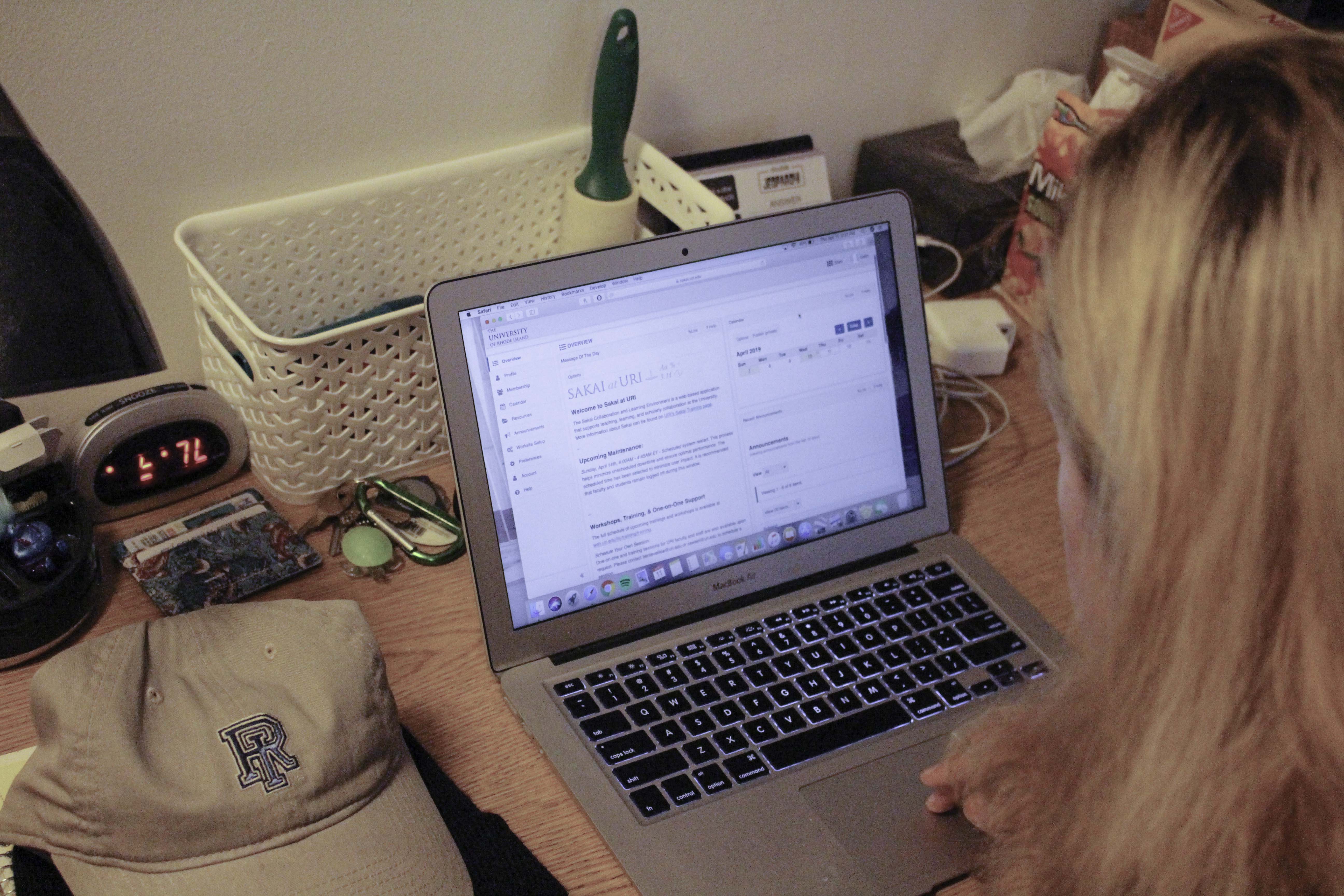Sakai will soon be replaced and phased out by another learning management system. | Photo by James McIntosh.
The University of Rhode Island’s Learning Management System Task Force hosted different vendors on campus throughout the past month in their effort to replace Sakai.
According to Kathleen Torrens, the chair of the task force, they received bids from four different learning management systems and they worked to score each one. The minimum score was 60. Only two learning management systems scored above the minimum, and Sakai was not one of them.
The two finalists, Brightspace and Canvas, hosted sessions on campus for students, faculty and staff to review their capabilities and answer questions. The public sessions were filmed and put online for people to review as well. A survey was sent out to the members of the University to gauge interest and opinions on each option.
“The feedback from the community came back very similar to what the committee had done in our evaluation of our visits,” Torrens said. “The next step is requesting the cost proposals from both companies, which we have now received, and I’m waiting to hear what our next steps are.”
The committee is currently reviewing the cost proposals. The integration process will begin over the summer. By the fall, the University will be using a new learning management system.
However, Sakai will begin to be slowly phased out. Professors will be encouraged to use the new system if they can, but in the transition year, students may have classes on either Sakai or the newly chosen learning management system.
When the University first switched to Sakai nearly 10 years ago, the previous learning management system was immediately cut off. This made it difficult for professors to transition materials from one site to another. This is something Torrens hopes to avoid this time.
“We’re going to be able to have a reasonable transition, a supported transition, a planned transition, to make sure that courses and programs come across and are taken care of in a logical, reasonable manner,” Torrens said.
While the task force is optimistic that the transition process will be smooth, many students are concerned about managing two interfaces.
“I think it’s really confusing,” freshman Sydney Chabot said. “If teachers are going back and forth it’s going to be confusing. Having to learn two could be an issue for incoming students.”
Freshman Katherine Blake agreed with Chabot.
“I think there’s some technical problems with Sakai because it is confusing, but I also think anything they bring is going to be confusing because you’re just going to have to learn it again,” Blake said. “Personally, I’m fine with Sakai. I can see why a lot of people wouldn’t like it. Once you get used to it, it’s fine.”
While it may complicate things for students, Torrens hopes it will be best for the University in the long run.
“It’s going to be a more modern user-interface for students,” Torrens said. “Something more like what they’re going to be using when they go out in the real world or have a job. The features, the integrations is going to be a completely different ball game.”
The Assistant Director of Online Education, Joannah Portman-Daley, is in charge of designing many of the courses that students take online and is a member of the task force. She believes the transition will be manageable.
“We are going to work with faculty in different departments to move content over strategically and purposefully,” Portman-Daley said. “What we don’t want is a big content-dump. We’re hoping to train faculty members in each department who can spearhead that process for their department.”
Portman-Daley believes that despite the transition process, the new learning management system will be beneficial for URI.
“I am a very robust Sakai user and I find it works fine,” Portman-Daley said. “I can use it easily, I know how to do things that I need to do. But I have taken that extra time to figure out workarounds. What these two platforms are going to do will make it more straight forward. The usability factor is going to be easier and more transparent. There’s going to be less figuring out how to get something done that isn’t already embedded in the system.”
Associate Professor of Education Jay Fogleman is also a member on the task force. As a professor in the School of Education, Fogleman sees learning management systems as a key piece of a student’s learning experience at URI.
“In my own classes [the learning management system] is kind of the glue that holds a lot of student course-taking together,” Fogleman said. “I’m hoping the [transition] will be smooth. I think it will be smoother for people who have used the old [learning management system] in basic ways, but I think people that teach online courses with really sophisticated lessons will transfer over well. Both vendors said it would.”
The final decision regarding which learning management system is chosen will be announced University-wide in the coming weeks.





